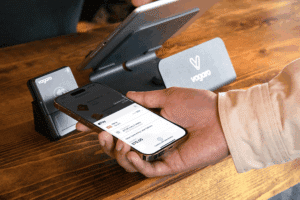Buy Now, Pay Later’s Impact on Consumer Habits

Buy Now, Pay Later (BNPL) is reshaping how people shop and spend. As credit card debt hits record highs and budgets tighten due to economic uncertainty, consumers are turning to payment options that feel simpler, safer, and more flexible. BNPL delivers, giving shoppers short-term buying power without long-term debt. For brands, that means higher conversions, larger carts, and less friction at checkout. If growth is the goal, Buy Now, Pay Later is no longer a nice-to-have. It’s a must.
What is Buy Now Pay Later?
BNPL is a type of short-term financing that lets shoppers split purchases into smaller, interest-free payments over time. Instead of paying in full at checkout, customers can pay in a few weekly or monthly installments.
This option shows up online (at checkout) and in-store (via mobile apps or payment terminals). Major players like Klarna, Affirm, and Afterpay offer different payment structures such as four equal installments, monthly payments, or longer-term financing for larger purchases.
It’s a financing option that is simple, fast, and built for convenience. which is why adoption is growing fast.
The Rise of Flexible Payment Options
Buy Now, Pay Later first took off in e-commerce but has quickly expanded across various retail sectors, from fashion and electronics to everyday essentials like groceries. Younger shoppers are driving the shift: Gen Z now uses BNPL more than credit cards, and Millennials are close behind, using it for everyday essentials, including groceries, to manage their budgets more effectively.
Changing Consumer Spending Habits
The ability to delay or spread out payments is fundamentally changing consumer spending habits. The ability to defer payments or split costs encourages consumers to make purchases they might otherwise postpone or avoid, leading to higher average order values (AOV). Studies show that retailers offering BNPL see higher conversion rates and larger carts.
There’s also a psychological layer. Deferred payments make high-ticket items feel more accessible, even if the total cost remains the same. That perception of affordability can lead to increased purchasing frequency and a willingness to explore products outside an immediate budget.
But with increased access comes increased responsibility. As with any credit product, consumers need to fully understand the terms of their Buy Now, Pay Later agreements to avoid overspending.
Benefits and Risks for Consumers
For consumers, flexible payment options like Buy Now, Pay Later offer a range of benefits:
Benefits:
- Convenience: Quick approval, often embedded directly into checkout.
- Budget control: Smaller payments help consumers manage cash flow.
- Zero-interest offers: Many BNPL options are interest-free if paid on time.
However, there are also risks to consider.
Risks:
- Fees: Late or missed payments can trigger penalties.
- Overuse: It’s easy to utilize multiple BNPL plans, leading to debt stacking.
- Credit impact: Some providers report to credit bureaus meaning missed payments can hurt credit scores. As reported by The Guardian and Investopedia, BNPL data is increasingly being included in credit scoring models.
Implications for Businesses
Flexible payment options are becoming essential for businesses focused on enhancing customer acquisition and retention. Integrating Buy Now, Pay Later services can unlock several key advantages:
Boosted Sales: By making purchases more affordable, BNPL can drive higher conversion rates and increase overall sales volume.
Attracting New Customers: Younger demographics, in particular, are drawn to the flexibility of BNPL, expanding a business’s customer base.
Increased Conversion Rates: The simplified payment process and perceived affordability can reduce cart abandonment, turning more browsers into successful transactions.
To stay competitive, brands need to vet and implement BNPL solutions that align with their audience and brand values. That integration should be part of a broader digital transformation across marketing and operations.
Regulatory Landscape and Future Outlook
BNPL’s rapid growth has triggered global regulatory attention. Governments and financial authorities are reviewing these services to ensure consumer protection, transparency, and fair lending practices. As noted by PYMNTS, regulatory scrutiny is increasing.
Businesses offering BNPL solutions must stay informed about these evolving regulations to ensure compliance and maintain consumer trust.
Long-term, flexible payment options will keep expanding into new categories (including B2B) and new customer segments. But with growth comes more scrutiny. Brands need to move quickly, stay compliant, and communicate clearly. Use paid and owned media channels to get ahead of regulatory changes and keep your customers informed.
Navigating the BNPL Landscape
Buy Now, Pay Later isn’t a passing trend. It’s a permanent shift in how consumers manage money and how brands should approach checkout strategy.
Done well, BNPL creates lift across the funnel: higher AOV, better conversion, lower drop-off. But it’s not just “set it and forget it”. Success comes down to execution. Here’s what to focus on:
- Know your customer: Does your audience value flexibility and installment options?
- Choose the right partner: Collaborate with reputable BNPL providers that align with your brand values and customer service standards.
- Monitor impact: Track performance (like Average Order Value (AOV), conversion rates) and watch for churn, returns, and fraud.
- Be transparent: Provide clear and transparent information to consumers about payment terms.
Need help integrating Buy Now, Pay Later into your performance strategy? WITHIN helps brands turn consumer behavior into revenue-driving results.